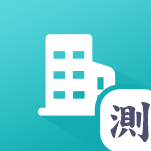What is Mid-Autumn Festival in lunar calendar in English?
- 民俗文化
- 2025-06-11 12:23:14
- 181
The Mid - Autumn Festival, also known as the Moon Festival or Zhongqiu Festival, is one of the most important traditional festivals in the Chinese lunar calendar. It falls on the 15th day of the 8th lunar month, when the moon is at its fullest and brightest of the year. This time of the year is special as it marks the middle of autumn, a season of harvest and abundance. In ancient China, farmers would celebrate this period to give thanks for the year's harvest, and it gradually evolved into a festival centered around family reunions and the appreciation of the moon.

The roots of the Mid - Autumn Festival can be traced back to the Zhou Dynasty over 3,000 years ago. During that time, the Chinese people had already developed a strong connection with the moon and held ceremonies to worship it. As time passed, these practices became more elaborate and integrated with various cultural elements. In the Tang Dynasty, the Mid - Autumn Festival started to gain popularity among the general public, and it was during the Song Dynasty that it truly became a well - established national festival. Poets of these eras often wrote beautiful verses about the festival, expressing their longing for family and friends, and their admiration for the moon.
One of the most well - known legends associated with the Mid - Autumn Festival is the story of Chang'e, the Moon Goddess. According to the legend, there were ten suns in the sky long ago, causing extreme heat and hardship for the people on Earth. A heroic archer named Hou Yi shot down nine of the suns, saving humanity. As a reward, he was given a pill of immortality. However, his wife, Chang'e, accidentally swallowed the pill and was forced to fly to the moon, where she has lived ever since. On the Mid - Autumn Festival, people look up at the moon and remember this touching story, which adds a layer of mystery and romance to the festival.
Family reunion is at the heart of the Mid - Autumn Festival. No matter how far away they are, family members will try their best to come home and gather together on this day. They sit in the courtyard or on the balcony, enjoying the bright full moon while ting and sharing stories. This sense of togetherness is a powerful reminder of the importance of family bonds in Chinese culture. It is a time to express love and care for one another, and to strengthen the relationships within the family.
Food also plays a crucial role in the celebration of the Mid - Autumn Festival. The most iconic food is the mooncake, a round pastry filled with various sweet or savory fillings such as lotus seed paste, red bean paste, or salted egg yolks. The round shape of the mooncake symbolizes unity and completeness, just like the full moon. In addition to mooncakes, other traditional foods are also served during the festival. In some regions, people eat pomelos, which are believed to bring good luck and prosperity. There are also local specialties like taro and duck, which are part of the rich culinary traditions associated with the Mid - Autumn Festival.
The Mid - Autumn Festival is not only celebrated in China but also in many other countries with significant Chinese populations, such as Singapore, Malaysia, and Vietnam. Each place has its own unique ways of celebrating, but the core values of family reunion, appreciation of the moon, and cultural heritage remain the same. In Singapore, for example, there are large - scale lantern festivals where people can enjoy beautiful lantern displays and traditional performances. In Vietnam, children participate in lantern parades, creating a lively and festive atmosphere.
In modern times, although the way of life has changed significantly, the Mid - Autumn Festival still holds great significance. It has adapted to the modern world while still maintaining its traditional essence. People now use technology to stay connected with their families, especially those who are far away. They can video - call their loved ones, share photos of the moon, and send virtual mooncakes. This shows that while the form of celebration may change, the spirit of the festival remains unwavering.
In conclusion, the Mid - Autumn Festival in the lunar calendar is a multi - faceted celebration that combines history, culture, family values, and delicious food. It is a time for people to come together, to remember their roots, and to cherish the simple joys of life. Whether it is through the ancient legends, the reunion with family, or the enjoyment of traditional food, the Mid - Autumn Festival continues to be a cherished and important part of Chinese and other Asian cultures. It is a festival that bridges the past and the present, and it will surely be passed down to future generations with its rich and vibrant traditions.
本文由作者笔名:skybaby 于 2025-06-11 12:23:14发表在本站,原创文章,禁止转载,文章内容仅供娱乐参考,不能盲信。
本文链接: http://www.cdqmw.com/minsu/1508.html
 skybaby
skybaby































